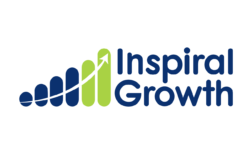Why conversion rate optimization is important
What is conversion rate optimization for Inspiral Growth
why conversion rate optimization is important for B2B and B2C Channels?
Conversion rate optimization (CRO) is the process of increasing the percentage of users who take a desired action on a website or app. This could include actions like making a purchase, adding a product to their cart, signing up for a service, filling out a form, or clicking on a link. CRO is an important aspect of digital marketing because it helps businesses to better understand and meet the needs of their customers, ultimately leading to increased revenue and growth.
There are many different strategies and techniques that can be used to improve conversion rates, and the best approach will depend on the specific goals and needs of the business. Some common strategies include A/B testing, usability testing, and data analysis.
A/B testing involves creating two versions of a web page or app, with one small difference between them, and then measuring which version performs better. This can help businesses to identify small changes that can have a big impact on conversion rates.
Usability testing involves getting feedback from users on how easy it is to navigate and use a website or app. This can help businesses to identify areas for improvement and make changes that will make it easier for users to take the desired action.
Data analysis involves looking at data on website traffic, user behavior, and other metrics to identify patterns and trends. This can help businesses to better understand their customers and make informed decisions about how to improve their website or app.
The Lift Model for Conversion Rate Optimization
One framework that is often used in CRO is the Lift Model. This model consists of four stages: attract, engage, convert, and retain. The goal is to optimize each stage in order to increase the overall conversion rate.
Attract involves getting users to visit the website or app. This can be achieved through search engine optimization, social media marketing, and other forms of online advertising.
Engage involves keeping users on the website or app and getting them to interact with it. This can be achieved through high-quality content, user-friendly design, and other factors that make the website or app enjoyable and easy to use.
Convert involves getting users to take the desired action, such as making a purchase or signing up for a service. This can be achieved through effective calls to action, clear and concise messaging, and a smooth and seamless checkout process.
Retain involves keeping users coming back to the website or app and encouraging them to take the desired action again. This can be achieved through personalized recommendations, email marketing, and other tactics that encourage loyalty and repeat business.
In conclusion about CRO
conversion rate optimization is an important aspect of digital marketing that can help businesses to increase revenue and growth. By using strategies like A/B testing, usability testing, and data analysis, businesses can optimize their websites and apps to better meet the needs of their customers and encourage them to take the desired action. The Lift Model is a helpful framework for understanding the different stages of the conversion process and how to optimize each stage to achieve the best results.
There are both pros and cons to conversion rate optimization (CRO).
Some of the potential benefits of CRO include:
Increased revenue: By increasing the percentage of users who take a desired action on a website or app, businesses can potentially increase their revenue.
Better understanding of customers: CRO can help businesses to better understand their customers and their needs, allowing them to tailor their products and services to better meet those needs.
Improved user experience: By making a website or app more user-friendly and easy to use, businesses can improve the overall user experience and encourage more users to take the desired action.
Greater efficiency: CRO can help businesses to identify and eliminate bottlenecks in the conversion process, making it more efficient and streamlined.
On the other hand, some potential drawbacks to CRO include:
Time and resource investment: CRO can be a time-consuming and resource-intensive process, requiring businesses to invest in testing, data analysis, and other activities.
Limited success: While CRO can lead to significant improvements in some cases, it’s not always possible to achieve the desired results. There is no guarantee that CRO efforts will be successful, and businesses may not see a return on their investment.
Ethical considerations: Some CRO techniques, such as dark patterns, can be unethical and potentially harm users. Businesses need to be careful to ensure that their CRO efforts are ethical and respectful of users.
Short-term focus: CRO is often focused on achieving immediate results, which can sometimes lead to a short-term focus that ignores long-term goals.
Overall, the decision to pursue CRO should be based on a careful assessment of the potential benefits and drawbacks, as well as the specific goals and needs of the business.


